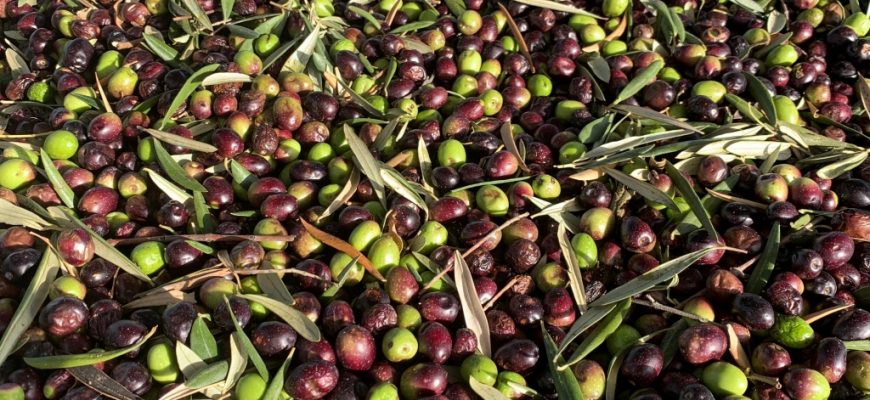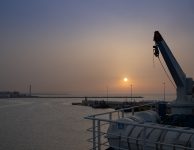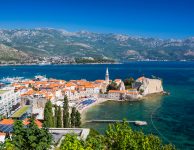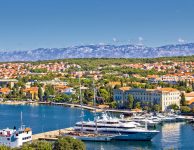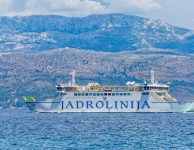Olive growing and tourism offer new products
Olive growing and tourism can together create a series of irresistible tourist products that combine gastronomy, health, creativity and production in rural areas of Croatia.
Olive tourism or olive oil tourism, which English-speaking experts call olive-oil tourism or oleotourism, is a narrowly specialized niche for individuals and groups of tourists interested in sightseeing under olive groves, olive growing, olive oil production and consumption, olive culture in general, reports cimerfraj.hr
Buža, oblica, slivnjača, istarska bjelica, levantinka, lastovka, žutica, moražola and pendolino are some of the 60 or so varieties of olives grown in our region.
The European Union is the largest producer and consumer of olive oil. According to EC data for 2021, Spain leads in production with 64%, Italy produces 16% of European olive oil, Greece 11% and Portugal 9%. These countries together cover about 99% of olive oil production in the EU. Olive growing in Croatia is in the remaining 1%.
In contrast to tourism of general interest, olive growing and tourism find common ground because the wide availability of travel has made it commonplace. Travelling just for vacation or to “see the world” is no longer interesting, and the rapid exchange of information has spurred the development of narrow niche tourism products, such as fishing or olive tourism.
The narrow specialization of the tourist offer saves money for promotion because it directly targets only those who are interested in this type of product – this is one of the conclusions of the Round Table “Olive Growing & Tourism” organized by the Association of Olive Growers Kaštela “Mastrinka”, held on Friday 18 February. There were discussions about ways to encourage farmers and travel agencies to develop olive tourism products, which do not yet exist in the Kastela region.
Olive oil roads
However, Croatia has its trump cards in this niche, and the pioneer in olive tourism is, you guessed it, Istria. Istria is the champion on the regional olive scene. We could easily get involved in the controversy over which olive oil is better – Istrian or Dalmatian, but the fact is that Istrians have gone much further in the development of various types of tourist offers, including those that rely on olive growing.
The most important project of affirmation of olive oil production in Istria is the Olive Oil Roads of Istria. Like the wine roads, those that connect the olive groves of our largest peninsula lead their guests through authentic landscapes to olive groves and taverns where you can taste the extra virgin olive oil of Istria combined with indigenous specialities or homemade bread crust.
An experience not to be forgotten
For tourists, it is an experience not to be forgotten, and for olive growers, such a practice has brought several benefits:
- Oil production remains at an extremely high level of quality;
- Istrian oil branding;
- Preservation of autochthonous Istrian varieties;
- Modernization of mini and family oil mills;
- Quality and successful promotion of Istrian oils and olive growers;
- Development of rural tourism and enrichment of gastronomic tourism offer;
- Financial stability of olive growers.
Although Split-Dalmatia County has the most olive trees and olive groves, Istria has managed to grow its oil beyond the borders of Croatia, for several years in a row, it was declared the top region of olive oil in the world by the renowned olive magazine Flos Olei.
The quality of Croatian olive oil is unquestionable
On the world tourist scene, the Mediterranean is a destination for lovers of liquid gold, as, in addition to argan, olive oil is also called. However, Croatia is just emerging from the sidelines, with Greece, Italy, Spain, Turkey, Portugal and Morocco picking up guests.
Croatia has five olive oils with marks of origin in the EU – oil from Cres, Korcula, Solta, Krka and Istrian extra virgin. In 2021, domestic olive growers won 67 gold and 20 silver medals at the prestigious New York International Olive Oil Competition. Only Italy, Spain and Greece won more medals. For a small country like us, it is a huge success. However, there is no systematic encouragement of olive tourism – olive oil tourism should be a strategic determinant of tourism development in Croatia.
Olive growing in tourism
Should it be emphasized that olive tourism encourages the development of many ancillary activities? Some of the most popular olive tourism products are:
1. Oil spa – Dalmatia, which is not blessed with thermal water sources or has a developed spa and wellness culture because the products of this niche are offered only within higher category hotels, has the opportunity to encourage wellness tourism through the niche of olive tourism. Olive oil, in addition to its excellent nutritional value, is often used in body care, especially in massage. Oil spa is a product that flirts with luxury tourism and generates off-season tourist traffic, all year round;
2. Branded accommodation – an opportunity to offer accommodation in rural areas, with olive groves, equipped and designed to promote olive culture in Croatia;
3. Oil trade;
4. Production of cosmetics – with special emphasis on small local producers;
5. Oil tasting houses on family farms and local restaurants;
6. Gastronomic offer with homemade olive oils.
7. Museums and interpretation centres;
8. Excursions and guided olive tours, participation in olive harvesting and oil production;
9. Crafts and arts – olive wood products.
Olive oil tourism
Olive oil tourism is a narrow specialization of an already segmented tourism product and is closely complemented by gastronomic tourism. How much Europeans value quality olive oil is best shown by the average per capita consumption. Every Greek consumes about 20 litres of oil a year, an Italian and a Spaniard 11 litres each, and a Portuguese 7.5. In our country, the consumption is about 1.5 litres per capita, according to the data that can be found on the website of the Ministry of Agriculture. Part of this consumption is accounted for by imported oils because our olive oil production does not cover our own needs.
Perhaps the situation would be different if we connected tourism with the millennial tradition of olive growing in our coastal areas and if we systematically connected olive growers and olive groves and tried to develop some innovative tourism practices in the tradition of olive oil and home-grown olives. 96% of olive trees in Croatia belong to family farms, so olive tourism could and should be an important part of the development of sustainable tourism in Croatia.
Source: cimerfraj.hr


